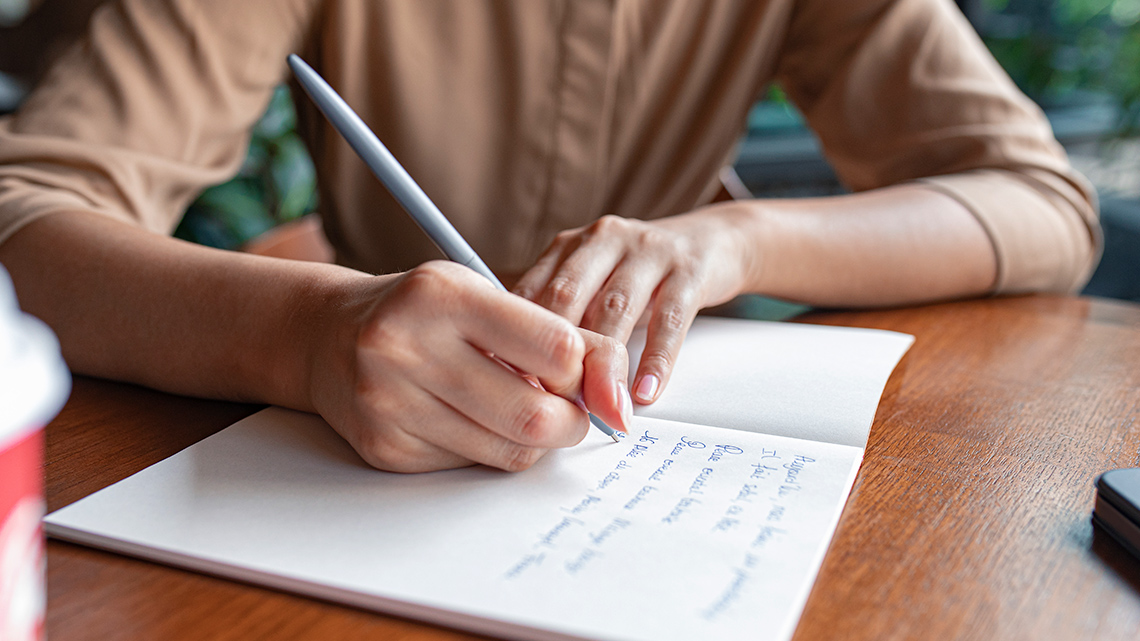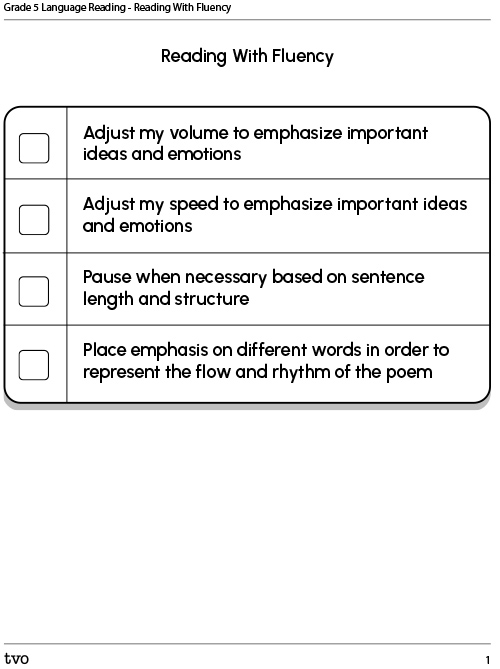Minds On
Exploring fluency in a drum poetry presentation
Explore this video of Mahlikah Awe:ri performing for Music Week in TVO's The Space.
What do you notice about Mahlikah’s performance?
How is the spoken part of the song appear in the video transcript?
Record your ideas using the Notice and Wonder Template below or a method of your choice.

Press the Activity button to access the Notice and Wonder Template.
Activity (Open PDF in a new tab)Press ‘Tip’ to reveal some questions to consider.
Action
Sentence structure
Authors use a variety of sentence structures and lengths to express different emotions and ideas. The sentence length can help to create tension or influence the pace of a text. The structure of a sentence can also influence the meaning of a text.

Short sentences can be used to make communication more casual, but they can also create a sense of urgency, excitement, or tension. For example, “Wait!” creates a sense of excitement/urgency. On the other hand, “Just one moment, please. I’ll be right with you.” is slower and features more information and description.
Explore the following two sentences and consider:
- Why might an author choose to use one or the other?
- What might be the author’s purpose?
- How is the meaning or effect different between these two sentences?
Use details from the sentences to explain your thinking.
- Sentence 1: He didn’t. He couldn’t. He wouldn’t. The matter was settled. It was time to move on.
- Sentence 2: He didn’t want the story to end like this. He couldn’t come up with any more ideas. He wouldn’t want to be put in the same situation again with his publisher. The matter was settled, he no longer had any more ideas, and he had completed his story. It was time to move on and submit his transcript to the publisher in order to finally close this chapter.
Press ‘Sample Responses’ to access possible answers to the above questions.
- The short sentences might have been used to communicate a sense of finality, or that
there's nothing more to do or say about the matter. In other words, "That's, that!"
The short sentences might also have been used to create a feeling of relief. As in,
"I'm glad that's over!"
- The longer sentences might be used to create a fuller description of what is occurring. The longer sentences might slow down the pace of the text, however they might also be used in order to provide a complete end, as all the information is provided and now there is nothing left. The longer sentences might also create a sense of something being drawn out, or mirror how the character could feel.
Word choice
Word choice is also important as it contributes to the meaning of a text. An author will carefully select their words to express different kinds of ideas and emotions and make a text more interesting for the reader and/or listener.
Let's explore Mahlikah's performance again. Consider her use of sentence length and how this might convey different thoughts and emotions. How do short sentences affect her pace or volume? What are her word choices? What do you think Mahlikah's poem is about?
Poem exploration
Find a performance of a poem which you enjoy and explore how the author uses sentence length and word choice. How does sentence length and word choice affect pace, feeling/mood, and/or create tension? What might the author’s purpose be for making these choices?
Consider:
- Why might the author be using long sentences? Are they trying to slow the pace, or provide vivid details, or create tension?
- Why might the author be using short sentences? Are they trying to speed the pace, create a feeling of anticipation, or relief?
- How does word choice affect the meaning of the poem? If some words were replaced, would the poem have the same meaning, mood, or tone?
- How does the structure of a poem influence how a poem is performed?
Record your ideas using a method of your choice.

Consolidation
Presenting a poem
How would you present the poem you chose in the Action section?
Consider:
- Where might you speed up or slow down?
- Where might you pause or emphasize certain words? Where might you increase, or decrease your volume?
- How could you use your expressions to communicate the meaning of the poem?
Practice presenting the poem and adjust your pace, volume, and expressions to communicate the meaning of the poem.

After you have practiced reading your poem, present it! How you present it is up to you. For example, you may read it aloud or record an audio or video clip. You may also create a detailed description about how you would read the poem (e.g., the strategies that you would use to match the form and purpose of the poem).
Once you have completed your performance, use Reading with Fluency to reflect on your performance.
Reflection
As you read through these descriptions, which sentence best describes how you are feeling about your understanding of this learning activity? Press the button that is beside this sentence.
I feel...
Now, record your ideas using a voice recorder, speech-to-text, or writing tool.
Select one of the following tasks:
Find a performance of a poem which you enjoy. Examine the performance and discuss what you enjoy about it. Consider how the presenter is using adjusting pace, or creating tension, or mood/feeling within their presentation. How are they using the sentence structure and word choice of the poem in order to influence their expression of the poem?
Find a poem which you think could be an engaging performance. Why do you think this poem could become an engaging performance? How has the author used sentence structure in order to create a gripping poem? How does the word choice contribute to the meaning of the poem? How could this influence flow and expression?
